Dynasty 18
The founders of Dynasty 18 continued the burial traditions of their predecessors and cut their tombs into cliffs in the Theban West Bank district of Dira' Abu al Naga. The exact nature of this continuation is uncertain because the tombs of the first two kings of the dynasty have not been identified, (although their mummified remains and some of their burial equipment have been found in later caches).
For the first time in Egypt, the kings of Dynasty 18 physically separated their tomb from their Memorial Temple (if, in fact, those temples were intended to serve that purpose). Perhaps the desecration of the prominently sited burials of the Old Kingdom and Middle
Kingdom made them more cautious. Perhaps the role of these temples in the Beautiful Feast of the Valley, a festival of great importance in New Kingdom Thebes, required that the temple be built near the Nile floodplain, an unsuitable place for a tomb. The first to separate them appears to have been Amenhetep I. His temple lay at Dayr al Bahri (and was later obliterated by the construction of Hatshepsut's terraced temple). At least three possible sites have been proposed for his tomb: KV 39, in the southeast branch of the east Valley of the Kings; AN-B, in the hills behind Dira' Abu al Naga; and K93.11, in Dira' Abu al Naga. Texts from the late New Kingdom and the Third Intermediate Period describe the location of the tomb, but the descriptions are vague and none can be accurately compared to the existing topography. As a result, we know Amenhetep I had a tomb in western Thebes but we do not know where it was dug.
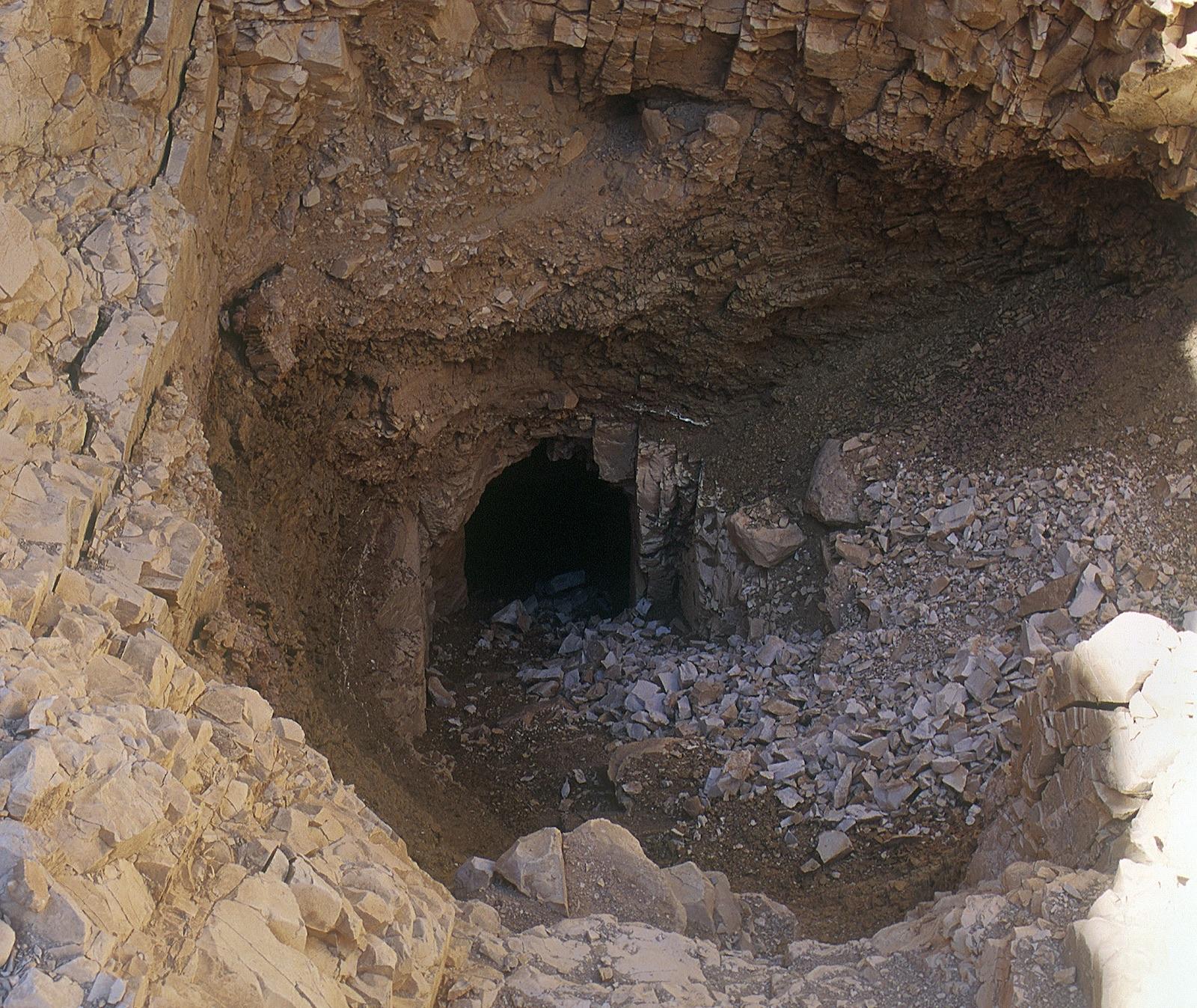
The reasons New Kingdom kings chose the East Valley of the Kings for their burials are unclear. The high point of the Theban Hills, al Qurn, whose ancient name was ta dehent "the peak," has an almost pyramidal shape when viewed from the entrance to the valley, and therefore some Egyptologists believe it must have inspired the selection. There are also indications that Hathor was associated with this area and that the serpent goddess Meretseger, "She who loves Silence," was connected with the mountain as a protector of the necropolis.
We know that Thutmes I was one of the first to cut his tomb in the East Valley of the Kings. In fact, he had two tombs, KV 20 and KV 38, but we do not know which was the first to be cut or the last to be used. An autobiographical text in TT 81, the tomb of the early Dynasty 18 official, Ineni, states that he saw to the digging of a tomb for Thutmes I in a private place, "no one seeing, no one hearing." (This may simply mean that Ineni had sole responsibility for the work.) Hatshepsut certainly intended KV 20 to be a burial place both for herself and her father: her Sarcophagus was found in KV 20 together with another that had been re-carved for Thutmes I attests. KV 38 also contained a sarcophagus for Thutmes I, this one made by his grandson Thutmes III, apparently for the reburial of Thutmes I. But whether Thutmes I's mummy was taken from KV 20 to a new tomb or returned to the original burial place is still not clear.
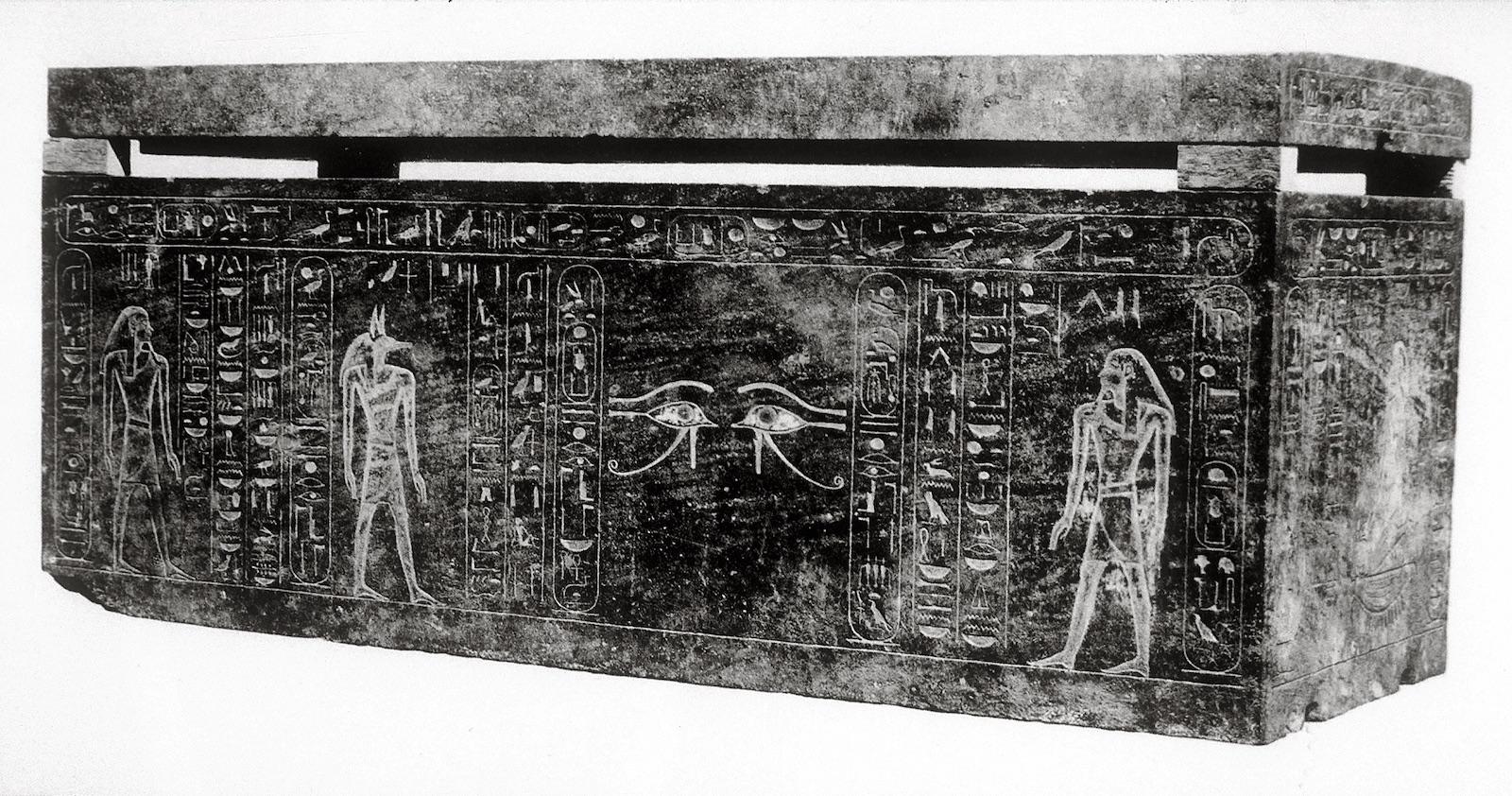
In the first half of the dynasty, entrances to royal KV tombs often were dug at the base of the sheer cliffs that encircled the Wadi. In the case of KV 34 (Thutmes III), the entrance was located in a cleft that served as a natural channel to direct rainwater. Such locations meant that tomb entrances were often well hidden. Those cut at the base of "waterfalls," where rain falling on the Qurn would cascade over the cliffs, would be buried by flood debris washed down in heavy storms. This situation is similar in purpose to several earlier tombs outside the Valley, such as that made for Hatshepsut as queen, and others cut for royal women in remote wadis south of al Qurna.
The tomb of Amenhetep III (KV 22) was dug into the slopes beneath the cliffs in the West Valley of the Kings (tombs in this area are sometimes designated "WV" as an alternative to "KV"). His was possibly the first to utilize this more distant branch of the wadi system that forms the royal necropolis. Inscribed foundation deposits discovered outside the entrance suggests that his father, Thutmes IV, initiated its cutting.
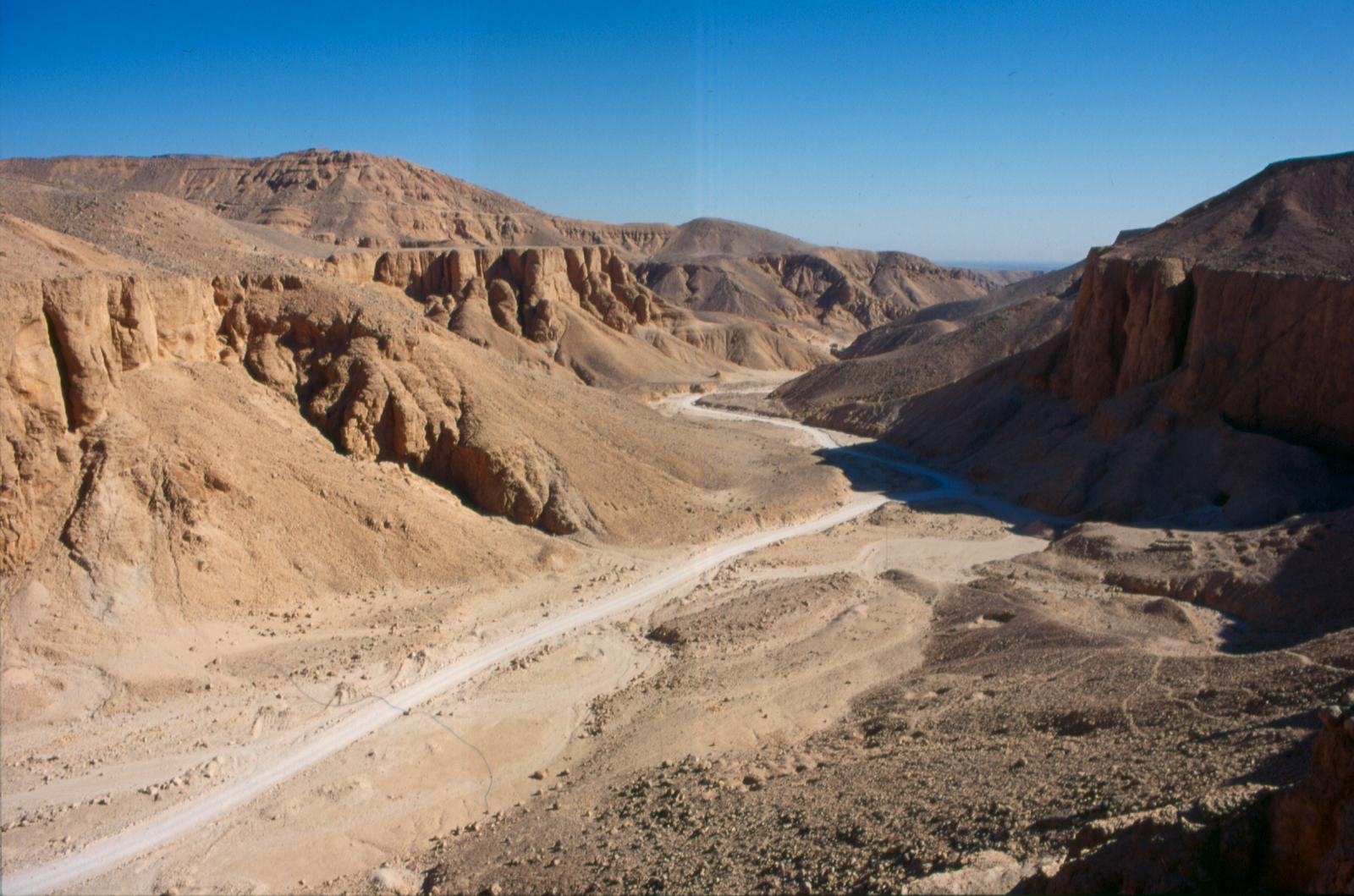
The West Valley was used only infrequently, but it holds several unfinished tombs of uncertain original ownership. These include KV 25, perhaps intended for Amenhetep IV before his move to Amarna and KV 23, thought by some to have been started for Tutankhamen but ultimately used for the burial of Ay. Like the tomb of Amenhetep III, these other tombs were dug part way up the Talus slope at the end of a branch of the main wadi. The last king of the dynasty, Horemheb, returned to the East Valley for his tomb (KV 57), cut just north of the tomb of Amenhetep II. The low-lying entrances to the tombs of Horemheb, Tutankhamen and KV 55, suggest that the floor of the wadi in this area was considerably lower than it is today.
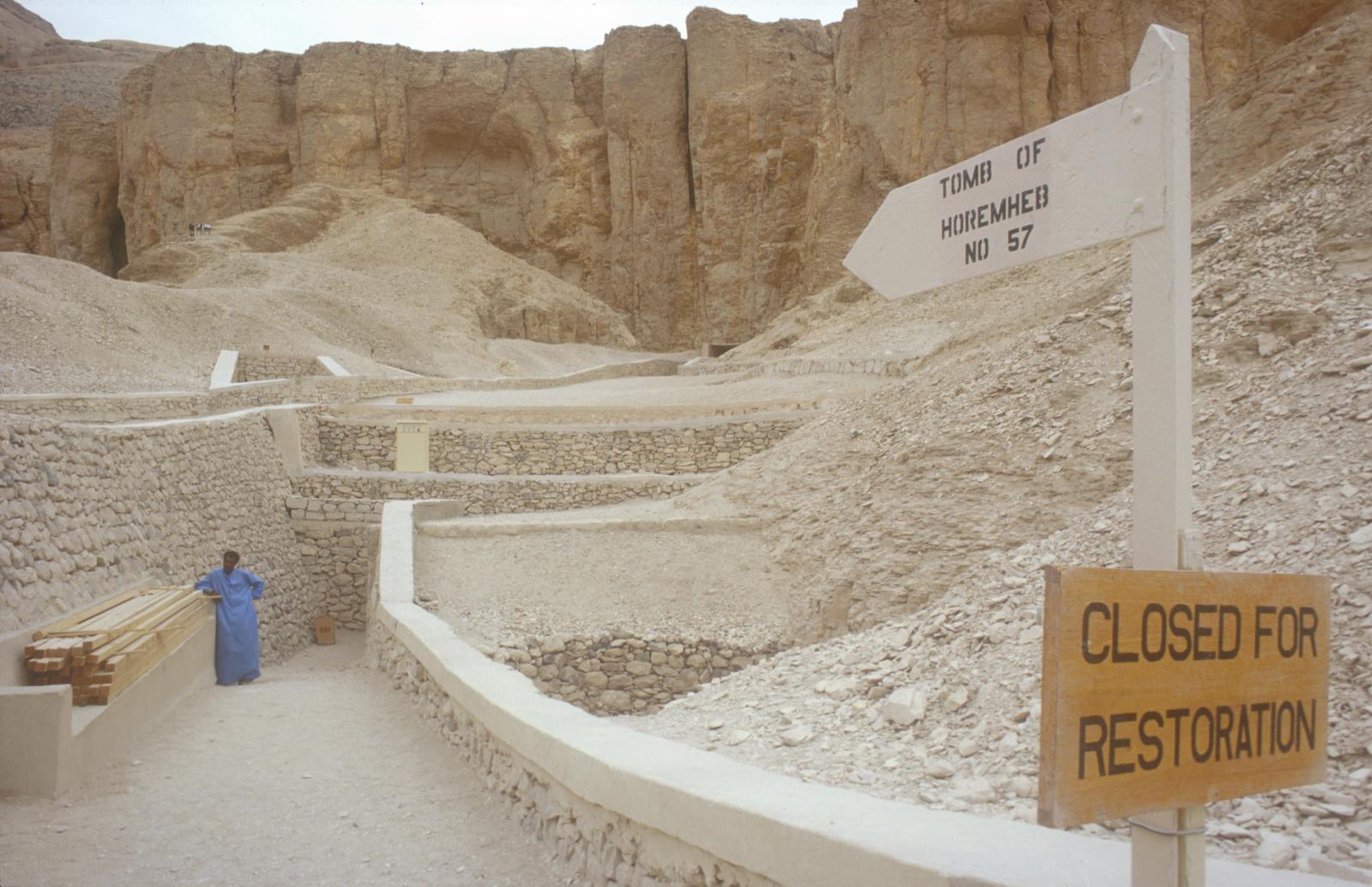
Dynasty 19
The late Dynasty 18 preference for cutting tomb entrances at the base of talus slopes was continued by the first three kings of the next dynasty, Rameses I (KV 16), Sety I (KV 17), and Rameses II (KV 7). Merenptah's tomb (KV 8) had its entrance at the junction of two small, natural watercourses in the cliff face. KV 10, the tomb of Amenmeses, was subsequently cut low in the same hillside as KV 16 and KV 17. Three of the remaining tombs of the dynasty, KV 13 (Bay), KV 14 (Tausert/Setnakht), and KV 15 (Sety II), were cut into the cliff face at the end of the southwest fork of the east Valley of the Kings. KV 47 was cut for Siptah in the end of the hill that separates the late Dynasty 19 tombs from the wadi branch leading to KV 34.
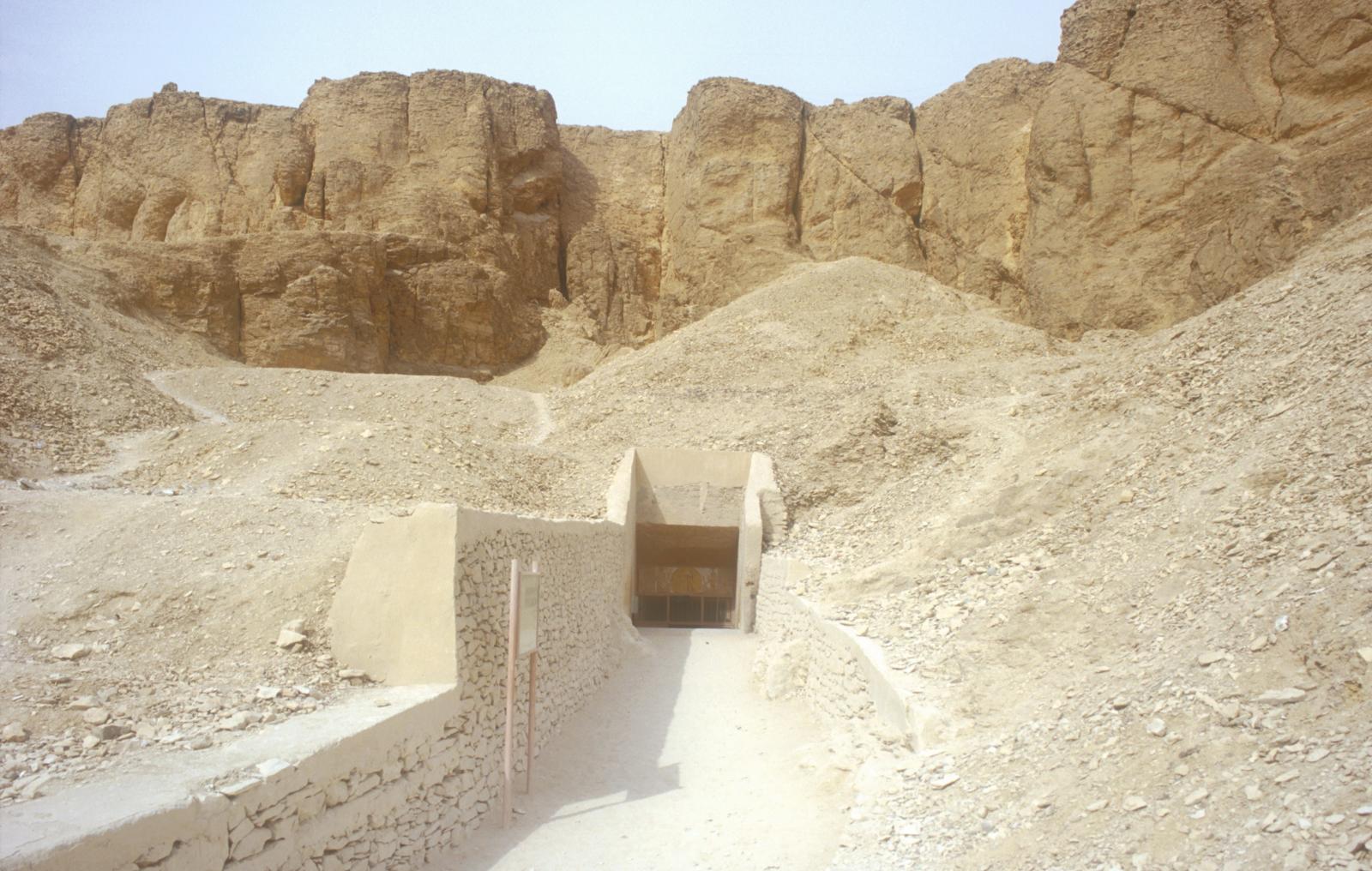
Dynasty 20
KV 11 was begun for Setnakht, but was taken over by his son, Rameses III, who shifted the axis to the west and added more corridors southward. Like several of the tombs of the preceding dynasty (including KV10, KV 16 and KV 17) KV 11 was also cut low into the hillside on the south side of the main valley. The tomb of Rameses IV (KV 2), as well as subsequent royal tombs of this dynasty (KV 9, KV 1, and KV 6), had monumental entrances cut into the ends of the hilly spurs that project from the cliff face into the main valley. The last two tombs, KV 18 and KV 4, for Rameses X and Ramesses XI respectively, were cut into the sides of two branch wadis running to the east of the main valley.
In summary, the first royal tombs in the Valley of the Kings were cut into cliffs at the top of talus slopes; later ones were located down these slopes to the valley floor. It should be borne in mind that, as tombs were being dug, the valley floor would have been raised as it was covered again and again with debris from the tomb cutting. This meant that the entrances of some of the smaller tombs cut low in the wadi floor in Dynasty 18 were finally buried under increasingly deep piles of debris.
